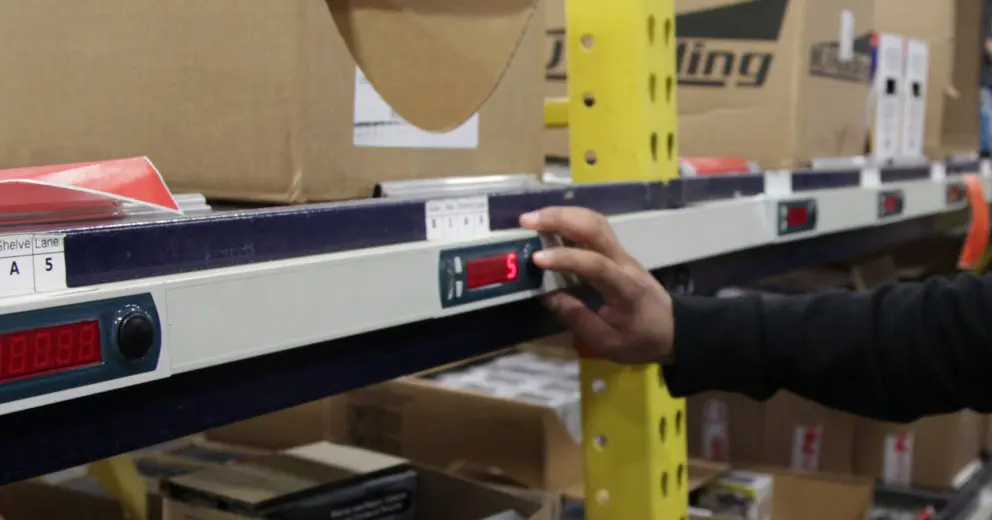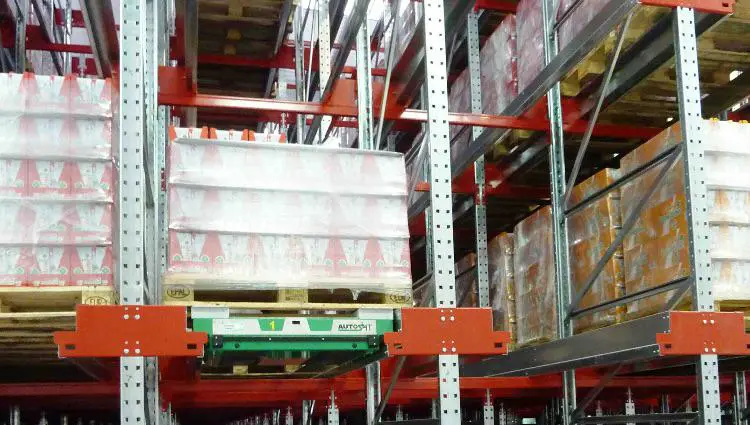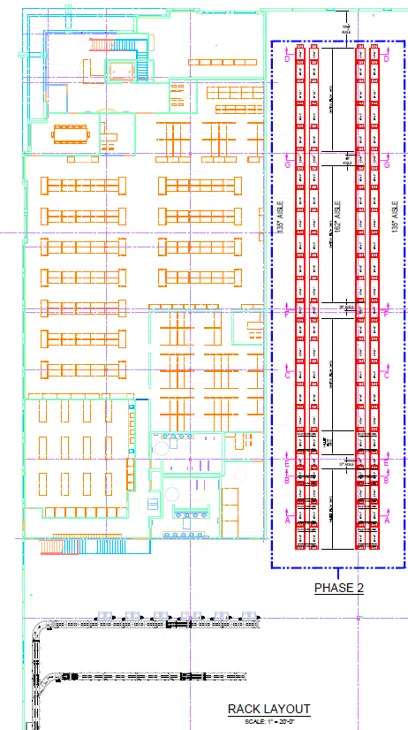Semi-Automated Material Handling Systems 101
Semi-automated material handling systems are a great alternative to full warehouse automation. Semi-automated systems will allow your operation to maintain competitiveness without investing as much as you would with full automation.
Read below to learn more about semi-automated systems, including key benefits and types.
What is a Semi-Automated Material Handling System?
Semi-automation is a system that utilizes automated machinery with human labor and intervention. So, the machine exists to enhance the processes that employees are performing.
Every semi-automated warehouse can look different. This is because semi-automation allows you to customize which portion of your warehouse is automated and which parts will be manually run. This allows you to decide how much automation your operation needs, which can range from a mostly conventional warehouse with minimal automation to one that is close to being fully automated but with minimal human interaction.
When Should You Invest in a Semi-Automated Warehouse?
It can be difficult to identify when to take the next step. Semi-automating your warehouse can be a large investment and it is important to know when the right time is to make the transition.
Listed below are situations in which implementing semi-automation may be beneficial.
- Unable to retain or attract employees.
- Experiencing an unacceptable number of errors.
- Struggling to keep up with demand.
- Would like to compete with ‘the other guy’.
- Concerned about employee or product safety.
Why Choose Semi-Automation vs. Full Automation?
As many companies move towards an automated warehouse, there may be pressure to make this transition in order to stay competitive. Keep in mind, some operations may get the same benefits from semi-automation as they would from full warehouse automation.
Here are some advantages semi-automation can offer over full automation.
Flexibility and room to grow: One advantage of semi-automation is that you can always go to more or full automation in the future. So, you can start slowly with your operation, with the intent of going to full automation at some point once you’re able to or more comfortable with it.
Allows for human intervention: Human intervention may be important for some operations. Semi-automation allows for human intervention where necessary. Due to the flexibility semi-automation offers, you are able pick and choose which processes will be automated and which are done manually.
Faster return on investment: As stated earlier, there is an investment that comes along with automating your warehouse to any degree. Even with the initial investment, the return on investments (ROI) that comes from semi-automation tends to be faster than with full automation, since these systems are typically less expensive.
Advantages of a Semi-Automated Warehouse
Semi-automation offers many benefits. Whether only a small fraction of your warehouse will be automated, or you are interested in implementing it into the majority of your operation, here are some of the advantages it can offer.
Reduces employee error: Many warehouse tasks such as picking and placing can become repetitive and therefore guarantees some type of human error. Using an automated system to assist with picking and placing orders will significantly decrease error rates.
For example, pick-to-light and put-to-light are semi-automated systems that assist employees with picking and placing orders. Integrating this semi-automated element into the picking and placing process has been shown to provide up to 99.6% pick and place accuracy.
Improves employee safety: There are a number of ways that semi-automation allows operations to increase employee safety.
First, employees often no longer have to take on tasks that require tough manual labor. Instead, the system will perform this portion of the tasks. For example, vertical lift modules bring the product right to the picker. The product is presented at the optimal height for the picker, so they no longer have to stoop to pick a product from the bottom levels or reach up high to pick product from upper levels.
Additionally, many semi-automated systems allow for employees to be more aware of their surroundings. For example, voice picking directs the picker via a headset, so the picker doesn’t have to constantly be looking down to reference paper or RF transmitter.
Increases picking speed: Semi-automation can take away the repetitive tasks performed by employees. After hours of completing the same tasks, manual picking times are shown to decrease. An automated picking system allows for the system to continually pick product at the same speed and then deliver it to an employee.
An example of this is a vertical lift module. VLMs have been shown to increase picking speed up to 800%. This is due to the machine taking on the task of presenting each item directly to the picker, so that the picker doesn’t have to walk the aisles searching for each product.
Examples of Semi-Automated Warehouse Systems
There are many different options when it comes to semi-automating your warehouse. Understanding how each benefits an operation is important. Read about the types of warehouse automation we offer below.
Pick-To-Light & Put-To-Light
Pick-to-light systems and put-to light systems are comprised of lighted displays attached to the pick face of each SKU. The lighting configuration can be customized to the distribution center’s needs. These displays can be fixed to any type of racking or shelving system, whether it be existing or new build.
How It Works: Pick-To-Light
- Each SKU has a designated set of lights. All lights in an aisle, for example, can be red.
- When the operator scans the order identifier in a designated zone, the light on that pickface will change from red to green. This will show the operator where they need to go to pick the correct item.
- Once the operator reaches the item, it will tell them how much of that item they must pick.
How It Works: Put-To-Light
- A tote containing products of the same SKU is picked by the operator and brought to the put wall.
- The operator scans the tote.
- A light with a quantity indicator appears next to each cube that requires that product.
Commonly Seen Advantages
There are many advantages of implementing pick-to-light and put-to-light systems. Such as:
- Reduction in picking and placing errors: it’s been shown to provide up to 99.6% picking and placing accuracy.
- Reduced labor costs: these systems allow more productivity per operator.
- Relatively low hardware and install cost compared to other automation options.
- Low hardware and install cost for automation: these can be installed right to the pick face via a plastic channel tek-screwed.
- Shortened order fulfillment cycle times.
- Reduced training time for new employees.
Ideal Uses
Ideal applications for pick-to-light and put-to-light include:
- High-density, high-speed picking.
- Distribution centers that have a team-based approach to order fulfilment.
- Distribution centers that fluctuate the number of employees needed based on seasons.
- Pick across zones to a central location.
Voice Picking
Voice picking systems are automated picking systems that can be much more efficient than picking via paper or RF transmitters. With voice picking, the operator does not have to ‘look down’ to reference their next steps. This results in higher accuracy as well as seconds saved with each step the operator must make (which quickly adds up!).
How It Works
- The voice command will tell the operator that they are to ‘cart pick’ (as opposed to fork truck pick).
- The operator lets the voice command know once they’re at the cart pick location.
- The voice command will direct them to put box size A in position 1, box size C in position 2, and box size D in position 3 on the cart. The operator will confirm once completed.
- The voice command will then direct them to go to the pick locations for each box, providing the optimized pick path.
Commonly Seen Advantages
Integrating voice technology into your operation can be very beneficial versus paper picking or picking via RF transmitters. Advantages include:
- Increased pick accuracy.
- Increased pick volume per worker.
- Reduced new employee training (up to 50%).
- Safety incidents reduced by 5% to 20%.
Ideal Uses
Ideal applications for voice picking systems include:
- Distribution centers that distribute items which are regulated and require a scan verification.
- Large distribution centers that distribute high volumes of SKUs.
- Distribution centers that fluctuate the number of workers needed based on seasons.
- Distribution centers that regularly reconfigure pick locations.
Pallet Runner
Pallet runners are semi-automated deep lane storage systems that delivers pallets via a cart that runs on a track within the racking system. It’s also commonly referred to as a pallet shuttle system.
Pallet runners essentially allow the entire volume of your warehouse to be utilized. The carts can be outfitted to suit a wide variety of pallet designs and can be used for first-in, first-out (FIFO) or last-in, first-out (LIFO).
How It Works
- Pallets are loaded into the system by a lift truck then transported and placed on the rack by an automated cart.
- The cart collects and transports pallets out of the system, while an operator moves between the lane and the shipping dock or other destinations.
- Once the cart collects the pallet, it transports it to the home position.
Commonly Seen Advantages
Some of the benefits pallet runners offer are:
- Reduced rack damage and product damage.
- High storage density (deep lanes).
- Each level is independently accessible, resulting in less honeycombing.
- Does not require particular lift trucks to operate.
- Can be designed for both FIFO (first-in, first-out) and LIFO (last-in, first-out) storage.
- Controlled product flow, no relying on gravity.
- Not affected by varying pallet weights.
Ideal Uses
A pallet runner system is ideal for a number of applications, including:
- High number of pallets of the same SKU.
- Low number of SKUs.
- Requires staging pallets for shipments.
- Fast throughput.
- Requires specialized pallet configuration.
- Maintain good quality pallets.
Vertical Lift Module
A vertical lifting module (VLM) is a vertically standing, semi-automated storage system. In this system, trays are stored in the front and the back of the system, with an opening on out outside of the system that allows for product to be delivered directly to the operator.

How It Works
- Picker scans a barcode or pushes a button associated with the item needed.
- VLM retrieves the product and presents the tray via the access window.
- A laser pointer or LED screen will identify the specific pick location on the tray.
- Once the item is picked, the picker indicates to the VLM that the task is complete.
- The VLM repeats this action for the next item on the scanned list.
Commonly Seen Advantages
Some advantages associated with VLM’s are:
- Reduced labor costs.
- Increased picking speed accuracy.
- Increased warehouse space.
- Increased control of inventory and tools.
- Improved ergonomics.
- Flexible and modular, the system can grow with you.
Ideal Uses
A VLM may be a good choice for your warehouse if you:
- Store high-value items.
- Perform kitting.
- Store items that need to remain clean.
- Currently using a tote or bin storage.
- Stores small parts.
Semi-Automate with Conveyors
Conveyors can be a great way to add an element of automation into your operation to expedite the order fulfillment process.
Simply put, conveyors move products from point A to point B. There are many options to accommodate what needs to happen in between point A and point B within conveyor types.
An example of how this can work is depicted in the CADD drawing in this section. The drawing shows an operation that includes a conveyor along with a pallet rack system to achieve a semi-automated operation. They integrate selective, pallet flow, and carton flow rack to house their items. The conveyor is used to get products from the racking system quickly over to fulfilment to be packed and shipped. This way, a forklift driving doesn’t have to travel the farther distance from the racking to the packing area.
Here are the three main categories of conveyor systems and how they work:
How It Works: Transportation Conveyors
- Moves pallets or cartons from point A to point B.
- Can be used for a variety of applications from lightweight items that vary in size to heavier full-pallet loads.
- Transportation conveyor options are available to accommodate requirements such as desired speed and product handling procedures.
- Transportation conveyor options include: gravity (not automated), belt, and live roller.
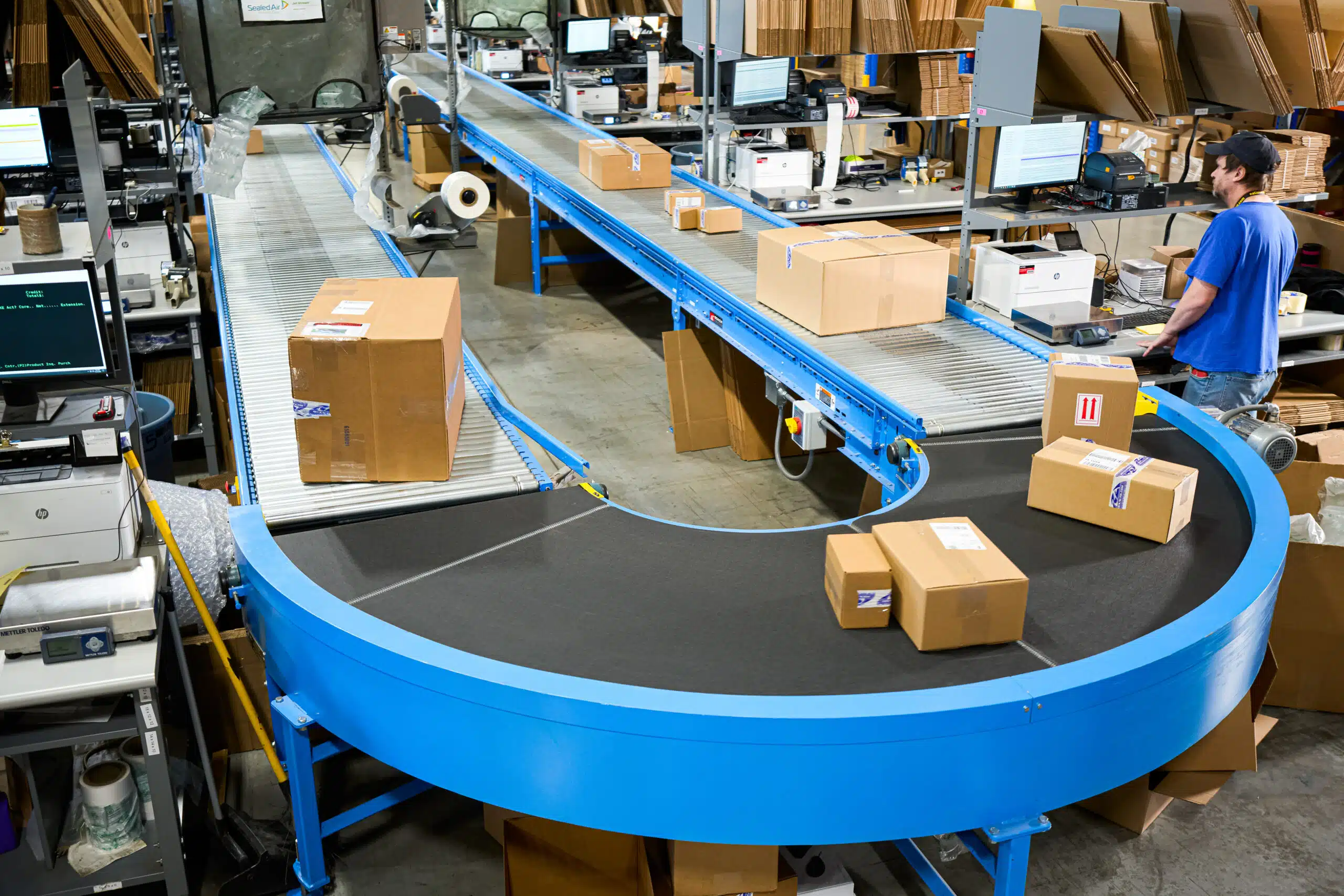
How It Works: Accumulation Conveyors
- Moves loads from point A to point B, allowing them to accumulate when necessary to allow time for equipment or other material handling resources to become available down the line.
- Once these resources become available, the system gives a signal to release the next queue of products.
- Accumulation conveyor options include: zero pressure, zero contact, and minimum contact.
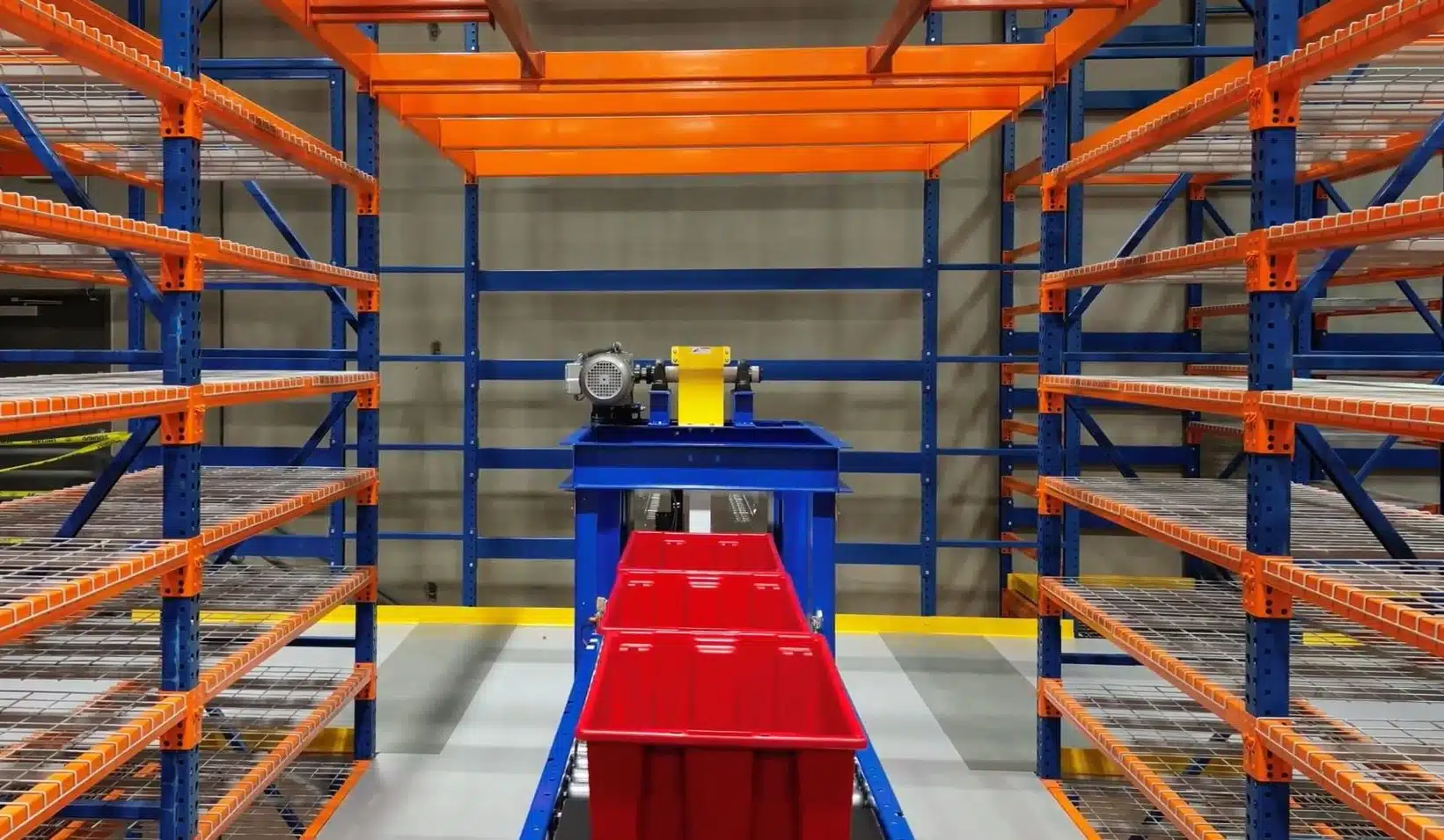
How It Works: Sortation Conveyors
- Directs products from one conveyor line to another.
- Integrates an induction system, system merges, and sortation diverts.
- Tailored to each operation in order to properly identify, track and transport products to expedite the order fulfillment process.
- Sortation conveyor options include: shoe sorter, pop-up wheel, right angle transfer, pusher style, narrow belt, and tilt tray.
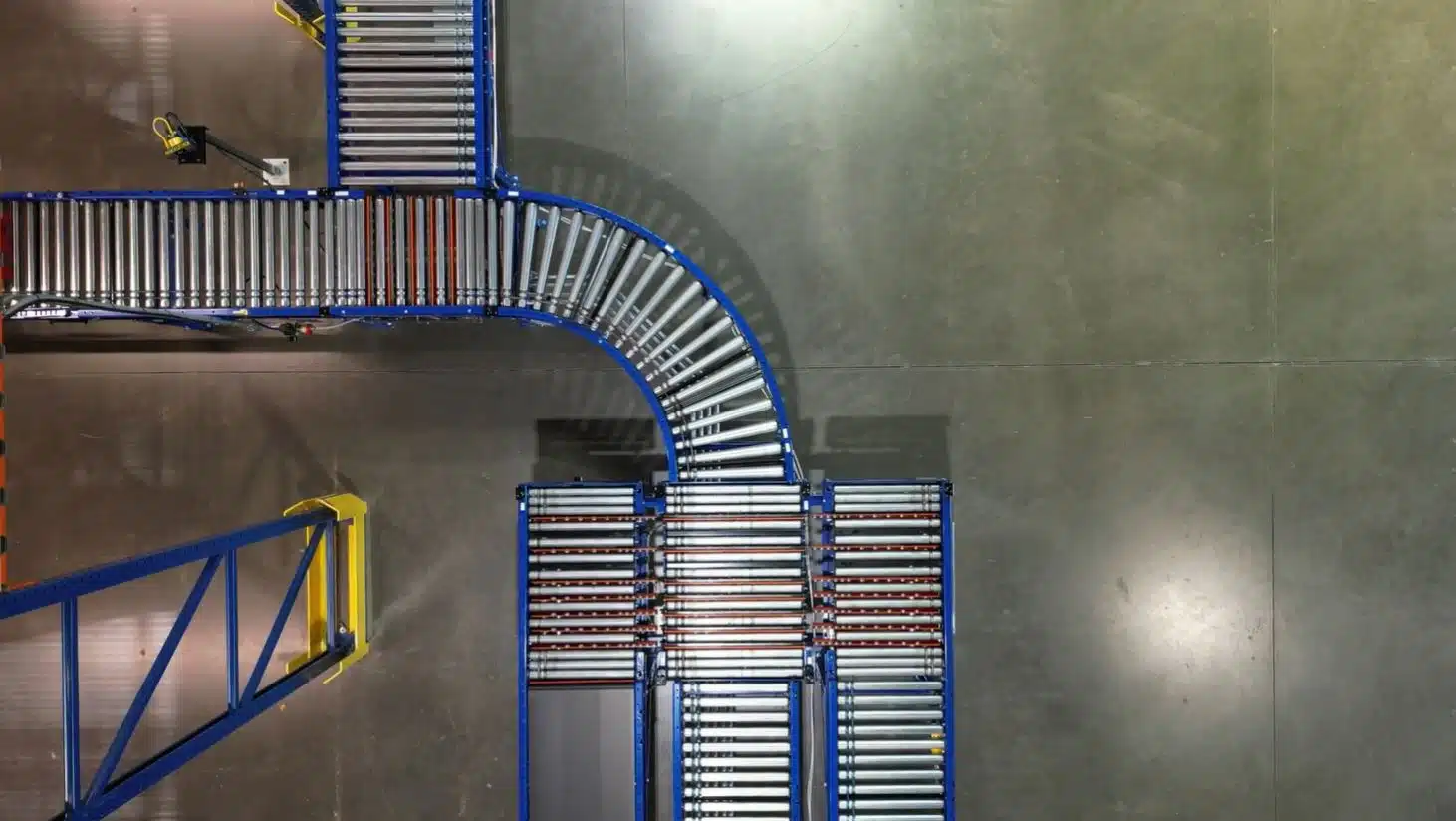
Your Next Step For A Semi-Automated Material Handling System
REB is highly knowledgeable and experienced in designing and installing FIFO rack systems. As a systems integrator, we’ll work with you to provide a turnkey system. From design, products procurement, subcontractor management, install, and permitting support, REB handles it all for you.
REB has a talented team of in-house project managers and project designers, all highly experienced in the material handling industry. We’ll work with you to make sure that your system is the best fit for your operation, installed and completed on-time and within budget.
We’d appreciate the opportunity to help you further, whether that be more information or a quote. Fill in the contact form on this page or call us at (800) 252-5955 to get in touch with a REB representative.
Share this post:
Submit Your Inquiry
Since 1962
REB has completed more than 100,000 projects in 15 countries (including all 50 states) for more than 20,000 customers across 50 industries, with 70% of customers as repeat buyers.
This is made possible by our team that has more than 300 years of industry experience designing and project managing material handling systems.
Learn more about REB's award winning service.

